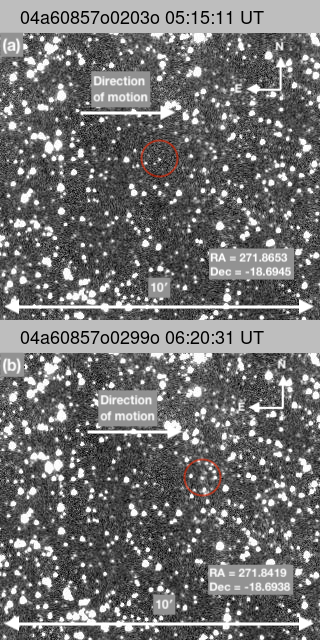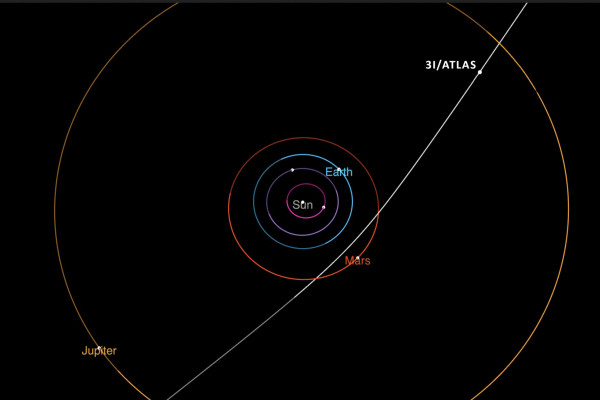Since the announcement on July 1, 2025, of the discovery of a new interstellar object—the third of its kind known to date—astronomers from Michigan State University (MSU), along with an international team of researchers including Toni Santana-Ros from the Institute of Applied Physics to Science and Technology at the University of Alicante (UA) and the Institute of Cosmos Sciences of the University of Barcelona (ICCUB), have focused their efforts on collecting data about this exotic body.
The team has now published the first scientific article on what is currently known about the object named 3I/ATLAS, in honor of the telescope network that discovered it: NASA’s Asteroid Terrestrial-impact Last Alert System (ATLAS). ATLAS consists of four telescopes—two in Hawaii, one in Chile, and one in South Africa—that automatically scan the entire sky several times each night in search of moving objects.
According to Santana-Ros, “the object is far from Earth, at 3 astronomical units, which is about 500 million kilometers, and its trajectory poses no risk of impact with our planet.”
As noted in the article, experts confirm that 3I/ATLAS is only the third interstellar object detected passing through the solar system. It may emit gas like other comets, although this is yet to be confirmed. Among other data, they also report that it is moving at a staggering speed of 216,000 km/h relative to the Sun and follows a boomerang- or hyperbola-shaped orbital path, which will lead it to exit the solar system and never return.

Astronomers hope that the James Webb Space Telescope and the Hubble Space Telescope will reveal more information about its size, composition, rotation, and how it reacts to the increasing solar radiation it will receive in the coming months.
UA and ICCUB researcher and co-author of the article, who has been actively involved in tracking 3I/ATLAS, explains that “studying interstellar objects that come from outside our solar system is an opportunity to advance our understanding of how planetary systems form and evolve.”
In addition to MSU and UA, the research and article involve collaboration from the European Space Agency’s Near-Earth Object Coordination Centre (Italy), NASA/Caltech’s Jet Propulsion Laboratory (USA), University of Hawaii (USA), Auburn University (USA), University of Barcelona (Spain), European Southern Observatory (Germany), Villanova University (USA), Lowell Observatory (USA), University of Maryland (USA), Las Cumbres Observatory (USA), University of Belgrade (Serbia), Polytechnic University of Milan (Italy), University of Michigan (USA), Western University (Canada), Georgia Institute of Technology (USA), Diego Portales University (Chile), and Boston University (USA).
Reference:
Darryl Z. Seligman et al., “Discovery and Preliminary Characterization of a Third Interstellar Object: 3I/ATLAS”, arXiv (2025). DOI: 10.48550/arxiv.2507.02757
Source: Michigan State University / UA Communications Unit
Media Contact:
Toni Santana-Ros, researcher at the Institute of Applied Physics to Science and Technology at UA and ICCUB: antonio.santana@ua.es



